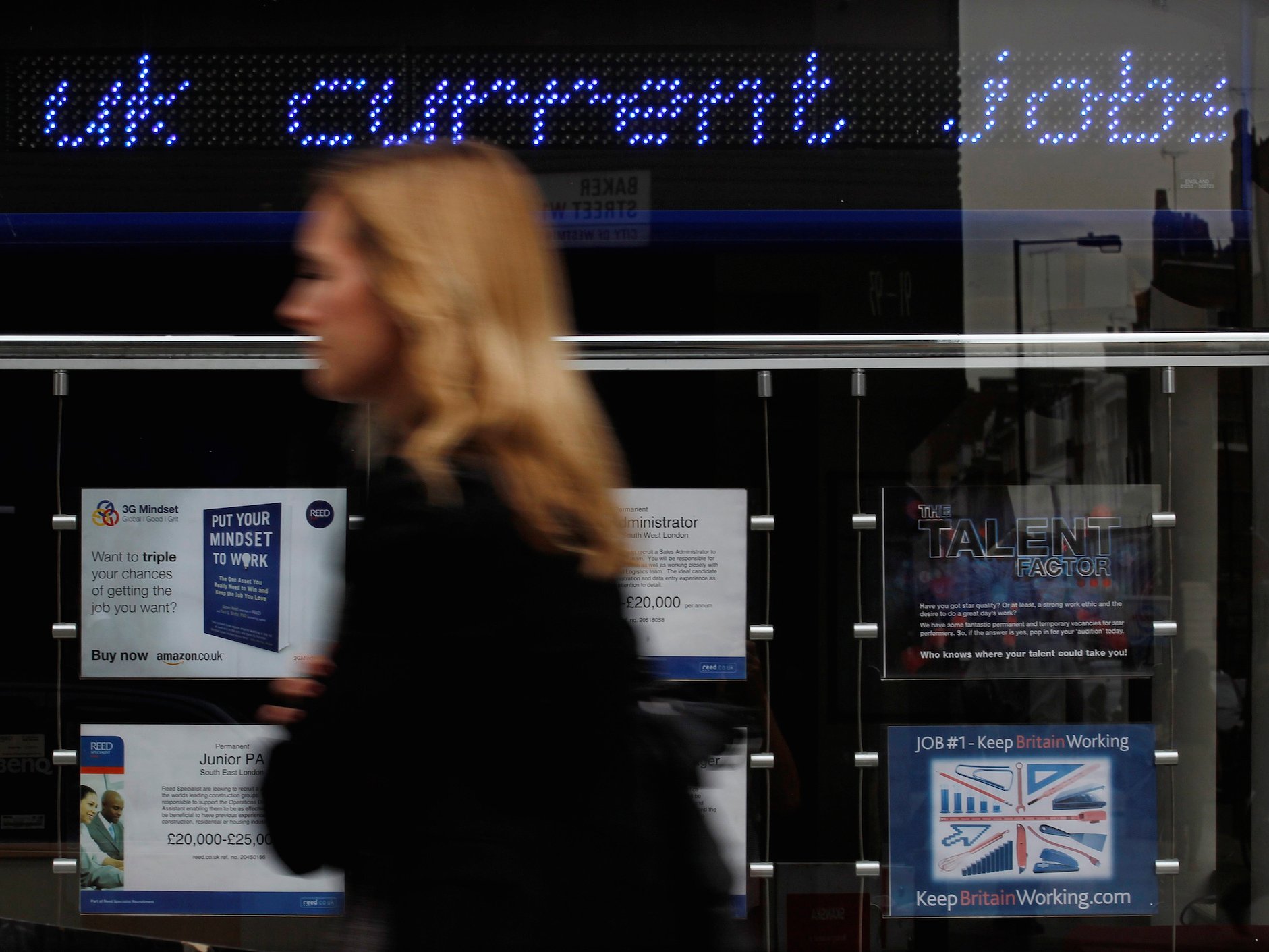 A pedestrian walks past an employment centre in London August 17, 2011.Reuters/Suzanne Plunkett
A pedestrian walks past an employment centre in London August 17, 2011.Reuters/Suzanne Plunkett
LONDON – UK unemployment remained at its lowest level since 1975, according to the latest data from the Office of National Statistics.
The unemployment rate was 4.3% in the three months to August, unchanged from the previous reading.
While the headline rate didn’t change, unemployment did fall in the three months to August, with 52,000 fewer people out of work.
The employment rate, which measures the proportion of people aged 16-64 in work, hit 75.1% – up from 74.5% in the previous year.
In total, there are 32.1 million people at work in the UK, according to the figures, 94,000 more than in the March to May period.
“Many labour market measures continue to strengthen. Employment growth in the latest three-month period was driven mainly by women, with a corresponding drop in inactivity. Vacancies remain robust, at a near-record level,” Matt Hughes, a senior statistician at the ONS said.
Here’s the ONS chart of unemployment over the longer term:
 ONS
ONS
Alongside the unemployment numbers, the ONS’ data showed that real wages for average Brits continue to shrink as wage growth fails to keep up with inflation.
“Between June to August 2016 and June to August 2017, in real terms (that is, adjusted for consumer price inflation), regular pay for employees in Great Britain fell by 0.4% and total pay for employees in Great Britain fell by 0.3%,” the ONS said.
“Total earnings in cash terms grew slower than prices over the last year, meaning their real value continues to fall, down 0.3 per cent over that period,” Hughes added.
Wednesday’s unemployment data comes 24 hours after inflation jumped to its highest level in five years, as Brexit continues to push up the cost of living in the UK.
The UK’s Consumer Prices Index (CPI) inflation rate — the key measure of inflation — was 3% in September, up from 2.9% in the previous month.











